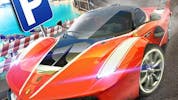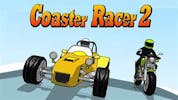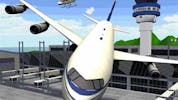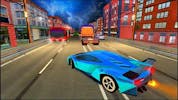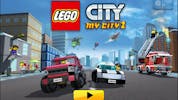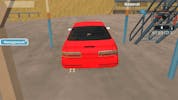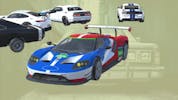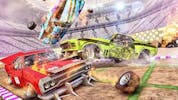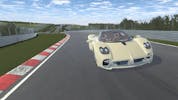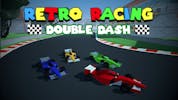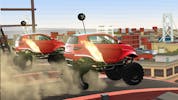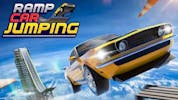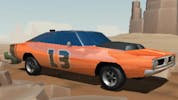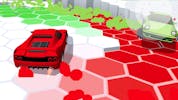Fast Lane Fun: A Complete Guide to Highway Road Racing Game
Get ready to hit the fast lane with Highway Road Racing - the ultimate driving game! With stunning graphics and challenging gameplay, this racing game is sure to keep you on the edge of your seat. Choose from a range of cars and hit the road, racing against other cars in some of the most iconic locations in the US, including Santa Monica, the Grand Canyon, and Bryce Canyon.
With a range of game modes, including time attack and racing, you'll need to be at your best to become the best driver on the road. Whether you're a seasoned racing game player or a beginner looking for a new challenge, Highway Road Racing will provide hours of entertainment. So buckle up and get ready for some fast-lane fun!
Game Overview and Short History
Highway Road Racing is a popular driving game that offers exciting and challenging gameplay. The game puts you behind the wheel of a car and lets you race against other vehicles on a busy highway, dodging traffic and trying to cover the distance in the shortest possible time.
As you progress through the game, you can earn money that you can use to upgrade your car or buy new ones, making them faster and more powerful. The game features a variety of game modes, including time attack, two-way racing, and distance racing, each offering a unique and challenging experience.
The game's stunning graphics and realistic sound effects add to the immersive gameplay, making it a must-play for all driving game enthusiasts. With Highway Road Racing, you can experience the thrill of high-speed racing from your home.
Gameplay and Mechanics
- Highway Road Racing offers a range of game modes, including time attack, two-way racing, and distance racing.
- The game lets you race against other vehicles on a busy highway, dodging traffic and trying to cover the distance in the shortest possible time.
- The controls are easy to use, with intuitive touch-based controls for acceleration, braking, and steering.
- You can choose from a range of cars, each with its own unique characteristics and handling.
- The game features realistic physics, allowing you to experience the thrill of high-speed racing and the challenge of navigating through traffic.
- You can earn money as you progress through the game, which can be used to upgrade your car or buy new ones.
- The game also features a range of power-ups, including nitrous boosts and coin magnets, that can help you gain an edge over your opponents.
- The game's difficulty increases as you progress, with more challenging opponents and obstacles to overcome.
- The game also includes a global leaderboard, allowing you to compete with other players worldwide.
- The game is available to play on both iOS and Android devices.
- Highway Road Racing offers an exciting and immersive gaming experience, with realistic graphics and sound effects adding to the gameplay.
- The game is free to play, with in-app purchases available for those who want to unlock additional features or purchase in-game currency.
Key Features of the Game
- Choose from a range of cars, each with its own unique characteristics and handling.
- Earn money as you progress through the game, which can be used to upgrade your car or buy new ones.
- Race against other vehicles on a busy highway, dodging traffic and trying to cover the distance in the shortest possible time.
- Experience realistic physics, allowing you to experience the thrill of high-speed racing and the challenge of navigating through traffic.
- Play a variety of game modes, including time attack, two-way racing, and distance racing.
- Use power-ups to gain an edge over your opponents, including nitrous boosts and coin magnets.
- Compete with other players from around the world on the global leaderboard.
- Enjoy stunning graphics and realistic sound effects that enhance the gameplay experience.
- Increase the game's difficulty as you progress, with more challenging opponents and obstacles to overcome.
- Play the game for free, with in-app purchases available for those who want to unlock additional features or purchase in-game currency.
- The game is available on both iOS and Android devices, making it accessible to a wide range of players.
- Highway Road Racing offers an exciting and immersive gaming experience that will keep players entertained for hours.
Visuals and Sound Design of the Game
- The game features realistic graphics of highways and other racing locations, including the Grand Canyon, Bryce Canyon, and Santa Monica.
- The sound effects of the cars' engines and tires screeching on the road add to the realistic feel of the game.
- The game also features background music to keep players entertained while racing.
- The game includes a variety of weather conditions such as rain, fog, and sunshine, which affect the visuals and sound design.
- The cars in the game have different designs and colors to choose from, adding to the variety of visuals.
- The game also features camera angles, including an aerial view and a first-person perspective, to enhance the visuals.
- The user interface is designed to be user-friendly and easy to navigate.
- The game includes day and night modes that affect the lighting and visuals of the game.
- The game's visuals and sound design are optimized for platforms like PCs, mobile phones, and tablets.
- The game includes special effects such as smoke, fire, and explosions, adding to the excitement of the race.
- The game's visuals and sound design are regularly updated to improve the user experience.
- The game includes customizable settings for graphics and sound, allowing players to adjust the visuals and sound to their liking.
Tips and Tricks of the Game
- Use the time attack mode to practice and improve your driving skills.
- Watch out for other cars on the road and avoid collisions to maintain your speed.
- Collect coins and other rewards to upgrade your car and improve your chances of winning.
- Use the brakes wisely, especially when driving on narrow roads or making sharp turns.
- Use the boost feature to give yourself an extra burst of speed, but use it strategically to avoid running out too quickly.
- Try different camera angles to find the one that works best for you.
- Learn the different tracks and their layouts to give yourself an advantage in the race.
- Pay attention to the weather conditions and adjust your driving accordingly.
- Experiment with different car designs and colors to find the one that suits your style.
- Use the nitro feature strategically to gain a temporary burst of speed when needed.
- Practice drifting to maintain your speed while going around corners.
- Use headphones or a good speaker system to appreciate the game's sound design fully.





